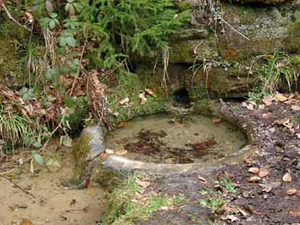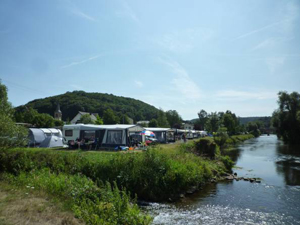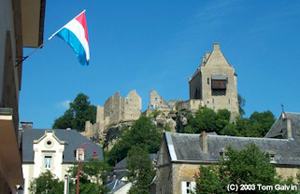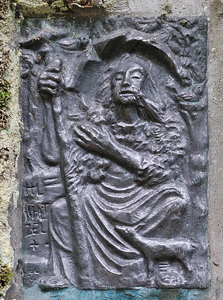”Schetzelbur”

The “Schetzelbur”, spring of the White Ernz The fount was caught in 1948 and equipped with a basin by the scouts group of Limpertsberg.
In the middle of the Grünewald the White Ernz has its source, called “Schetzelbur” because the beatified hermit Schetzelo lived near the source in a cavern in the 12th century. It was namely this source that supplied him with the vital drinking water.
Just as the Black Ernz, the White Ernz also has its source on the territory of the Niederanven Municipality in the Luxembourg Sandstone layer, the most important national drinking water reservoir. In the village of Eisenborn, the brook (called “Schetzelbach” here) leaves the community territory already after a few meters and continues its way in the north eastern direction.

In Reisdorf, a village surrounded with woods and situated in the valley of the river Sauer, the White Ernz is flowing into last named.
Many small affluxes make the brook swell and soon it flows as a parallel river to the Black Ernz. Just as its namesake it runs through the Sandstone layer all by digging deep into the rocks and forming a beautiful and attractive landscape around, so charming for locals and tourists.
Up to its estuary in the Sauer, the border river between Luxembourg and Germany and the second largest national river, the White Ernz flows over 33 km. As its stream course is one of the strongest besides the Alzette and the Black Ernz, the White Ernz represents one of the most important affluxes of the Sauer.
The valley of mills

Located in the White Enrz valley, the village of Larochette (Fiels) represents with its impressive old castle ruin a perfect popular tourist centre.
The lower part of the White Ernz, from Ermsdorf to Reisdorf, is called “the valley of mills”. Constructed mostly during the 19th century, the the mills were supplied by the waters of the White Ernz in order to grind cereals or extract oil. Some of these mills even produced electricity needed to enleighten the surrounding villages.
The river name “Ernz”

The beatified hermit Schetzelo, once living in the Grünewald, gave his name to the White Ernz, also called “Schetzelbur”.
The names of white and black Ernz, prove that our rivers’ names are of ancient origins. The name “Ernz” as well as the French word “Arance”, comes from “Arantia”. It is the a pre-celtic name of a river (“Ar” =river).
